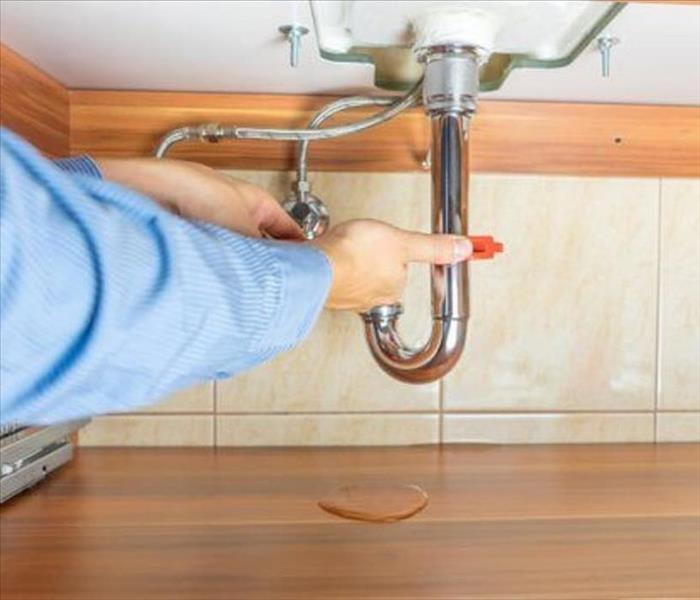How a $10 pipe can cost thousands in water damage to your home,
11/10/2017 (Permalink)
One of the most common causes of internal flooding in homes is from a burst flexible water hose, or ‘flexi hose’, an increasingly common plumbing items around the world.
The flexi hose is a plumbing connection from the water main to major appliances, sinks and toilets, and has come into the spotlight as one of the top reasons a home is flooded — from water leakages and ruptures, to major water bursts.It’s highly likely you have flexi hoses installed in your home. So just how preventable are flexi hose water leakages, ruptures and bursts?
What are Flexible Water Hoses?
Flexible water hoses, or ‘flexi hoses’, are a versatile hose commonly installed in modern homes and to replace standard copper pipe installations in older homes.
Found in connections from the wall outlet to taps, sinks, basins and tubs, flexi hoses are also used to connect water from the toilet stop tap to the cistern.
Constructed in outer braided layers of stainless steel with a rubber pipe interior, the flexi hose — as its name suggests — is designed for its malleability and can be shaped to meet a range of home plumbing hardware solutions.
So why are so many people experiencing problems with flexi hoses?
In general, there are many reasons why a burst may occur — the main culprits tend to be:
- The age of the water hose – most hoses have a life span of five years
- Incorrect installation – over tightening, over stretching, and looseness can cause the pipe to fail
- Incremental damage through limited or no maintenance – rusting, fraying and kinking can cause the pipe to bust.
While flexi hoses tend to be the preferred option for many installations, there is a general consensus amongst plumbing professionals that they are also a leading cause of house flooding, with spoiled carpets, warping of wooden floors and water-damaged ceilings on multi-floor homes too often the result.
The main reasons behind the widely agreed consensus that flexi hoses are a major cause of flooding in homes is due to four key factors: Questionable products on the market, incorrect installation, a lack of simple maintenance checks and the overall age of the flexi hose — and with that, there is also good news:
Water damage to your home from a burst flexi hose is largely preventable.
What follows is a range of causes that can compromise the integrity of the flexi hoses in your home, followed by ways you are more likely to prevent them.
The Most Important Thing is Prevention
Paramount to preventing flooding in your home is to have a licenced plumber install all flexible water hoses, or check those already installed to professionally confirm the integrity of the product.
It’s also a good idea to show everyone in your home where the main water valve is located so they can stop the water in case of an emergency.
The Installation Factor
The DIY factor is at the heart of our culture and has intensified with the rise of television shows all about ways to ‘do it yourself’.
However, the installation of flexi hoses requires specialised knowledge that a licenced plumber is best to provide — and while the initial financial outlay may be more than the perceived savings from a DIY installation, you’re more likely to save in the long run.
For example, as with most products, flexi hoses vary in quality and your home can be compromised by the choice of water hose you buy. More expensive does not immediately lend to better quality and a licenced plumber will more likely know which type and brand of water hose is right for your home.
Flexi hoses also vary in length and choosing the wrong size can make the hose too taut, putting the hose under stress by being stretched, or too loose, allowing the hose to become kinked or twisted. Either way, installing the incorrect length of flexi hose will cause it to fray and unravel over time, leading to a major leak.
Flexi hoses are also easy to over-tighten, with excessive force applied to the end fittings of a flexi hose in order to obtain a watertight seal. However, such force can cause a fracture in the rubber seal connection, which, over time, is likely to cause a major rupture.
While flexi hoses are generally seen as robust products, if they are put under great strain due to being damaged at the time of installation, the likelihood of structural breakdown is high.
It’s worth considering a licenced plumber to install any and all flexi hoses around your home — and if you’re in any doubt of the flexi hose systems already installed, consider having a plumber come to your home for an inspection.






 24/7 Emergency Service
24/7 Emergency Service
